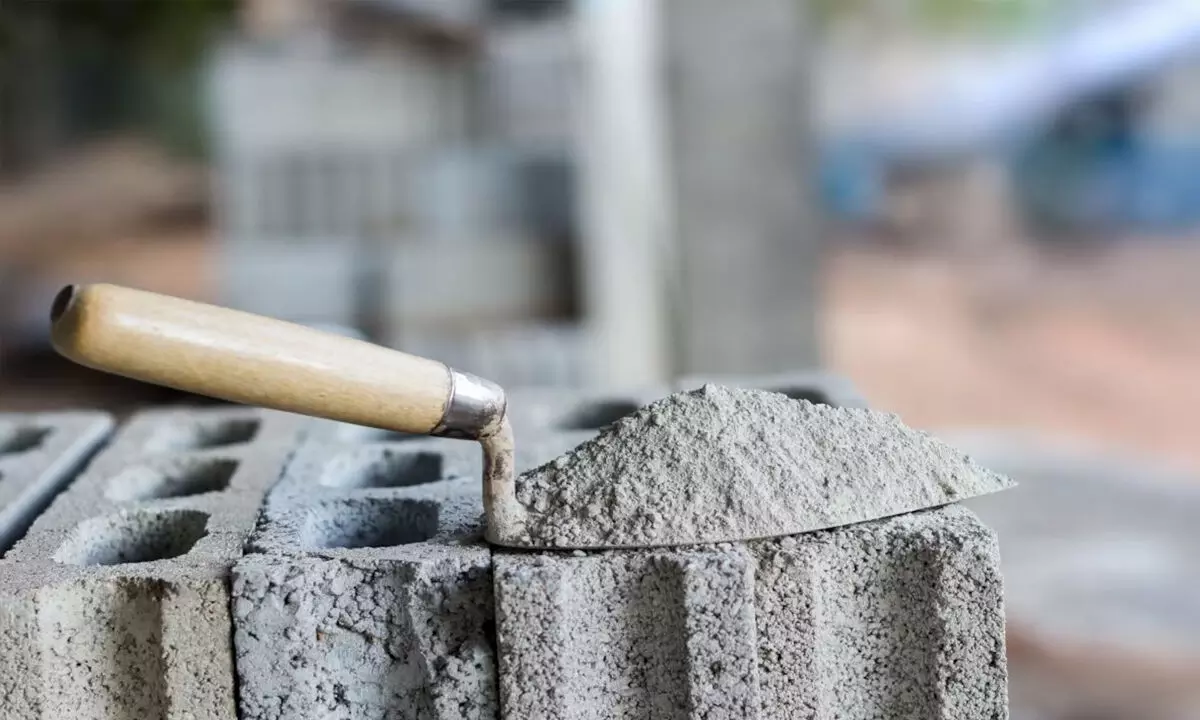Steady demand puts Indian cement sector on a firm foundation
image for illustrative purpose

The demand for cement has been heading northward continuously for the last two-three years in India. It grew by eight per cent in fiscal 2022 and then by 12 per cent in FY 2023. As things stand, the upward journey continues. If a recent study by CRISIL is anything to go by, then the demand for cement, which is the second-most consumed product globally, has been up by 10-12 per cent in the country this fiscal, riding as it is on infra spending. The growth momentum can be attributed to increasing thrust and spending on roads, railways, power (including renewable), urban infra, telecom, ports, airports and water works. Lest one forgets, Rs 5.9 lakh crore has been budgeted for fiscal 2024 compared to revised estimate of Rs 4.3 lakh crore for fiscal 2023.
What is more significant is that profitability in the sector is also expected to recover from multi-year low, due to falling power and fuel costs. The continuing strong off-take from the infrastructure segment is likely to take the demand to nearly 440 million tonnes in FY 2024. From towering skyscrapers to sturdy bridges, and from resilient dams to secure houses, cement is the backbone of the built environment. Quite significantly, the housing segment, which accounts for nearly 55 per cent of cement demand, is expected to see a steady growth owing to healthy traction in rural housing and urban real estate execution. Continued government focus on affordable housing under the Pradhan Mantri Awas Yojana is also expected to support demand.
When it comes to profitability, combined with stable cement prices and softening power and fuel costs, operating profit of cement manufacturers in the country, is expected to recover by close to Rs 200 per tonne from a multi-year low of Rs 770 per tonne last fiscal. Power and fuel costs, which constitute nearly 30-35 per cent of the total production cost, is likely to follow the trend of falling petcoke and coal prices with a lag effect. For this fiscal, power and fuel costs are likely to be lower by Rs 200-250 per tonne on-year. This will improve per-tonne profitability to Rs 950-975 this fiscal, after the eight-year low of Rs 770 seen last fiscal. Meanwhile, there is some degree of skepticism as well. Demand growth may moderate to 7-9 per cent in the second half of this fiscal, given the high base.
There are other reasons also. The possibility of the central government’s capital expenditure witnessing some slowdown ahead of the general elections and the delayed and uneven monsoon could cause some pullback in rural housing demand. Constrained availability of labour during the third quarter, as five states go to elections, will also play a role. However, there is not much to worry about. Overall, a strong first half will certainly support a robust double-digit growth this fiscal, opine many analysts. Moreover, Pan-India cement prices which dipped nearly 2.5 per cent during April-August 2023 have seen a pullback recently, riding on the rising cement demand, which, in turn, helped in revenue growth.

